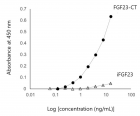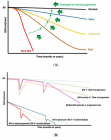Abstract
Research Article
Assessment of on farm agrobiodiversity and its role in food sufficiency in mid hill, Nepal
Anjali Shrestha, Khem Raj Dahal*, Sharoj Raj Mishra and Subodh Khanal
Published: 31 March, 2023 | Volume 7 - Issue 1 | Pages: 040-048
A survey was conducted in the agricultural farms in Dhulikhel Municipality, mid-hill, Kavre, Nepal aiming at assessing the status of agrobiodiversity with the purpose of understanding its role in food security taking altogether 133 farming households scattered in several settlements with lowland, upland, and home garden being the general agricultural land use systems. Biodiversity index: Shannon-Wiener Index was used to assess diversity of plant. The main purpose was to assess the farm agrobiodiversity and to find out whether biodiversity level has a direct link to household food self-sufficiency. For descriptive analysis frequency, percentage, mean and standard errors were used. In the case of inferential statistics independent sample t - test and binary logistic was used to find the odd ratio of practicing home garden. The result showed that the average landholding size was 0.66 ha/household with 0.37 ha, 0.3 ha, and 0.06 ha being upland, low land, and home garden, respectively. A total of 136 plant species were documented out of which 74 were the effective number of species in the study area. Among the used plants, fodder shared 27% of the total plant diversity followed by fruit (21%), vegetable (19%), medicinal plants (8%), pulses (8%), spices (7%), oilseeds (5%) and cereals (5%). Similarly, the mean livestock unit (LSU) was 2.65. The overall Shannon-Wiener Index was 4.30 indicating high diversity of species and 87.7% of the species were evenly distributed. The Index was higher for vegetable (3.11) followed by fruits (2.9) and fodder (2.85). Higher diversity was found in fodder trees in lowlands whereas vegetable species were more diverse in upland and home garden. Similarly, the Index was 4.29 in the upland whereas it was 4.078 in the home garden followed by 3.13 in the lowland. The evenness was 0.899, 0.87, and 0.74 in upland, home garden and lowland, respectively. Higher species diversity revealed that the site was rich in agrobiodiversity. A significant positive correlation (0.22) was observed between Shannon-Wiener Index and farming years. Similarly, positive correlation (0.33) was found between an increase in the level of agrobiodiversity and food self-sufficiency. The result demonstrated that increasing crop diversity increases the household’s ability towards food sufficiency implying the need for the formulation and implementation of efficient policy to conserve the agrobiodiversity at municipality as well as national levels.
Read Full Article HTML DOI: 10.29328/journal.afns.1001048 Cite this Article Read Full Article PDF
Keywords:
Agrobiodiversity; Shannon-Wiener Index; Food sufficiency; Mid-hill; Nepal
References
- Index MT. Convention on biological diversity. Science. 2004; 279: 860-863.
- Holt AR, Alix A, Thompson A, Maltby L. Food production, ecosystem services and biodiversity: We can't have it all everywhere. Sci Total Environ. 2016 Dec 15;573:1422-1429. doi: 10.1016/j.scitotenv.2016.07.139. Epub 2016 Aug 15. PMID: 27539820.
- Assessing agrobiodiversity: A compendium of methods. Rome. 2018; 90.
- Altieri MA, Funes-Monzote FR, Petersen P. Agroecologically efficient agricultural systems for smallholder farmers: contributions to food sovereignty. Agronomy for Sustainable Development. 2012; 32: 1-13.
- Furman B, Noorani A, Mba C. On-Farm Crop Diversity for Advancing Food Security and Nutrition. In Landraces-Traditional Variety and Natural Breed. IntechOpen. 202.
- Zsögön A, Peres LEP, Xiao Y, Yan J, Fernie AR. Enhancing crop diversity for food security in the face of climate uncertainty. Plant J. 2022 Jan;109(2):402-414. doi: 10.1111/tpj.15626. Epub 2021 Dec 21. PMID: 34882870.
- Zimmerer KS, Jones AD, de Haan S, Creed-Kanashiro H, Tubbeh RM, Hultquist C, Nguyen KT. Integrating Social-Ecological and Political-Ecological Models of Agrobiodiversity with Nutrient Management of Keystone Food Spaces to Support SDG 2. Frontiers in Sustainable Food Systems. 2022; 6: 115.
- Jones SK, Estrada-Carmona N, Juventia SD, Dulloo ME, Laporte MA, Villani C, Remans R. Agrobiodiversity Index scores show agrobiodiversity is underutilized in national food systems. Nature Food. 2021; 2(9): 712-723.
- Sharma R, Mina U, Kumar BM. Homegarden agroforestry systems in achievement of Sustainable Development Goals. A review. Agron Sustain Dev. 2022;42(3):44. doi: 10.1007/s13593-022-00781-9. Epub 2022 May 23. PMID: 35646163; PMCID: PMC9125548.
- Joshi BK, Acharya AK, Gauchan D, Bhatta MR. Agrobiodiversity status and conservation options and methods. In proceedings of second national workshop. Kathmandu, Nepal. 2017; 28-31.
- Joshi BK, Upadhya D. On-farm conservation approaches for agricultural biodiversity in Nepal. Journal of Agriculture and Natural Resources. 2019; 2(1): 14-35.
- Joshi BK, Gauchan D. Agrobiodiversity, and Neglected and Underutilized Species for Food, Nutrition, Livelihood, and Environmental Security in Nepal. In Agriculture, Natural Resources and Food Security: Lessons from Nepal. Cham: Springer International Publishing. 2022;
- State Report on Biodiversity for food and agriculture. Ministry of Agriculture Development, Food security and Environment Division, Nepal. 2019; 259.
- Pathirana R, Carimi F. Management and Utilization of Plant Genetic Resources for a Sustainable Agriculture. Plants (Basel). 2022 Aug 4;11(15):2038. doi: 10.3390/plants11152038. PMID: 35956515; PMCID: PMC9370719.
- Khaliq R, Antofie MM. Means and Tools For Conservation Of Agrobiodiversity In Pakistan. Agri-Food. 2014; 83.
- Schmitz S, Barrios R, Dempewolf H, Guarino L, Lusty C, Muir J. Crop Diversity, its Conservation and Use for Better Food Systems. In Science and Innovations for Food Systems Transformation. Cham: Springer International Publishing. 545-552.
- Thrupp LA. Linking agricultural biodiversity and food security: the valuable role of agrobiodiversity for sustainable agriculture. Int Aff. 2000;76(2):265-81. doi: 10.1111/1468-2346.00133. PMID: 18383639.
- Wang SM, Zhang ZW. The State of the World's Plant Genetic Resources gor Food and Agriculture. Journal of Plant Genetic Resources. 2011; 12(3): 325-338.
- KC KB, Pant LP, Fraser EDG, Shrestha PK, Lama A. Assessing links between crop diversity and food self-sufficiency in three agroecological regions of Nepal. Regional Environmental Change. 2016; 16:1239–1251.
- Frison EA, Cherfas J, Hodgkin T. Agricultural biodiversity is essential for a sustainable improvement in food and nutrition security. Sustainability. 2011; 3(1): 238-253.
- Bhandari S, Yadav PK, Rijal S. Home Garden; an Approach for Household Food Security and Uplifting the Status of Rural Women: A Case Study of Saptari, Nepal. Turkish Journal of Agriculture-Food Science and Technology. 2021; 9(10): 1792-1798.
- Aryal K, Partap U, Chaudhary RP, Pandey A, Tandin T, Uprety Y, Chettri N. Agrobiodiversity in the Kangchenjunga Landscape: Status, threats, and opportunities. 2021.
- Joshi BK, Gorkhali NA, Pradhan NN, Ghimire KH, Gotame TP, KC P, Mainali R, Karkee A, Paneru R. Agrobiodiversity and its Conservation in Nepal. Journal of Nepal Agricultural Research Council. 2020; 6: 14-33.
- Joshi BK. Agrobiodiversity indicators and measurement using R for description, monitoring, comparison, relatedness, conservation, and utilization. Agrobiodiversity & Agroecology. 01 (01): 47-64. DOI: https://doi. org/10.33002/aa010103..
- Bai YL, Fu C, Thapa B, Rana RB, Zhang LX. Effects of conservation measures on crop diversity and their implications for climate-resilient livelihoods: the case of Rupa Lake Watershed in Nepal. J Mt Sci. 2022;19(4):945-957. doi: 10.1007/s11629-020-6426-3. Epub 2022 Apr 13. PMID: 35432490; PMCID: PMC9005915.
- Pradhan B, Rayamajhi K, Khanal S. Assessment of on-Farm Management and Associated Knowledge of Agro-Biodiversity in Climate Smart Villages of Nawalpur District in Nepal. SAARC Journal of Agriculture. 2021; 19: 259-268.
- Singh K. Agrobiodiversity, Status, and Conservation Strategies. In Agro-biodiversity and Agri-ecosystem Management. Singapore: Springer Nature Singapore. 2022; 27-32.
- Baul TK, Tiwari KR, Mcdonald MA. Exploring agrobiodiversity on farm: A case from Middle-hills of Nepal. Small scale Forestry. 2013; 12(4): 611-629.
- District Profile, Kavrepalanchwok, Nepal. Central Bureau of Statistics. 2017; 169.
- Paudel B, Acharya BS, Ghimire R, Dahal KR, Bista P. Adapting agriculture to climate change and variability in Chitwan: long-term trends and farmers’ perceptions. Agricultural Research. 2014; 3: 165-174.
- Bhusal P, Ghimire B, Khanal S. Assessing link between on farm agro-biodiversity and food self-sufficiency in two agro-ecological regions of Nepal. Environment & Ecosystem Science (EES). 2021; 5(2): 78-84.
- Pandey S. Factors affecting crop diversity in farmers' fields in Nepal. Renewable Agriculture and Food Systems. 2015; 30(2): 202-209. doi:10.1017/S1742170513000367
- Baul TK, Rahman MM, Moniruzzaman M, Nandi R. Status, utilization, and conservation of agrobiodiversity in farms: a case study in the northwestern region of Bangladesh. International Journal of Biodiversity Science Ecosystem Services & Management. 2015; 11(4): 318-329.
- Manandhar TD, Shin MY. How community-based forest management can improve rural livelihoods: A case of Kabhre district, Nepal. Forest Science and Technology. 2013; 9(3): 131-136.
- Khanal S, Khanal D, Kunwar B. Assessing the Structure and Factors Affecting Agrobiodiversity of Home Garden at Katahari Rural Municipality, Province 1, Nepal. Journal of Agriculture and Environment. 2019; 20: 129-143.
- Schupp JL, Sharp JS. Exploring the social bases of home gardening. Agriculture and Human Values. 2012; 29: 93-105.
- Magurran AE. Measuring Biological Diversity. Blackwell Science. 350 Main Street, Malden, MA 02148-5020, USA. 2004; 261p.
- Zaldivar ME, Rocha E, Castro E, Barrantes R. Species diversity of edible plants grown in home gardens of Chibchan Amerindians from Costa Rica. In: Human Ecology. 2002; 30(3): 301-316.
- Semu AA. The Study of Home Garden Agrobiodiversity, Practices of Home Gardening And Its Role For In-Situ Conservation Of Plant Biodiversity in Eastern Hararghe, Kombolcha Town Oromia Regional State Ethiopia. Open Journal of forestry. 2018; 8: 229-246.
- Tuomisto H. A diversity of beta diversities: straightening up a concept gone awry. Part 1. Defining beta diversity as a function of alpha and gamma diversity. Ecography. 2010; 33: 2-22.
- Guidelines for the preparation of livestock sector reviews. Animal Prodcution and Health Guidelines. Rome, Italy. 2011; 66.
- Sunwar S. Home gardens in western Nepal: opportunities and challenges for on-farm management of agrobiodiversity. M.S. Thesis, Swedish Agriculture University and Uppsala University, Sweden. 2003; 42.
- Das T, Das AK. Conservation of plant diversity in rural homegardens with cultural and geographical variation in three districts of Barak Valley, Northeast India. Economic Botany. 2015; 69: 57-71.
- Kehlenbeck K, Maass BL. Crop diversity and classification of home gardens in Central Sulawesi, Indonesia. Agroforestry Systems. 2004; 63: 53-62.
- Mburu SM, Koskey G, Kimiti JM, Ombori O, Maingi JM, Njeru EM. Agrobiodiversity conservation enhances food security in subsistence-based farming systems of Eastern Kenya. Agriculture and Food Security. 2016; 5: 19-28.
- Acharya KP. Linking trees on farms with biodiversity conservation in subsistence farming systems in Nepal. Biodiversity & Conservation. 2016; 15: 631-646.
- Paudel B, Rana RB, Sthapit BR, Maharjan SK, Shrestha A, Shrestha P, Gurung AR, Regmi BR, Basnet A, Adhikari A. Determinants of agriculture biodiversity in Western Terai landscape complex of Nepal.Munich Personal RePEc Archive. 2012.
- Joshi N, Kehlenbeck K, Maass BL. Traditional, neglected vegetables of Nepal: Their sustainable utilization for meeting human needs. Conference on international agricultural research for development, October 9-11, 2007. Germany. 11.
- Rocky P, Sahoo U. Proximate constituents of some home garden food crops and household food security in Mizoram, northeast India. Indian Journal of Hill Farming. 2019; 32: 71-78.
- Bistaa SK, Joshib H, Yadavc PK. Assessing The Structures And Factors Affecting On-Farm Agrobiodiversity In Home Gardens Of Farwestern Nepal. Education. 2022; 86(13.3): 88-9.
- Kahane R, Hodgkin T, Jaenicke H, Hoogendoorn C, Hermann M, Keatinge JD. Agrobiodiversity for food security, health and income. Agronomy for Sustainable Development. 2013; 33(4): 671–693.
Similar Articles
-
Assessment of on farm agrobiodiversity and its role in food sufficiency in mid hill, NepalAnjali Shrestha,Khem Raj Dahal*,Sharoj Raj Mishra,Subodh Khanal. Assessment of on farm agrobiodiversity and its role in food sufficiency in mid hill, Nepal. . 2023 doi: 10.29328/journal.afns.1001048; 7: 040-048
Recently Viewed
-
Agriculture High-Quality Development and NutritionZhongsheng Guo*. Agriculture High-Quality Development and Nutrition. Arch Food Nutr Sci. 2024: doi: 10.29328/journal.afns.1001060; 8: 038-040
-
A Low-cost High-throughput Targeted Sequencing for the Accurate Detection of Respiratory Tract PathogenChangyan Ju, Chengbosen Zhou, Zhezhi Deng, Jingwei Gao, Weizhao Jiang, Hanbing Zeng, Haiwei Huang, Yongxiang Duan, David X Deng*. A Low-cost High-throughput Targeted Sequencing for the Accurate Detection of Respiratory Tract Pathogen. Int J Clin Virol. 2024: doi: 10.29328/journal.ijcv.1001056; 8: 001-007
-
A Comparative Study of Metoprolol and Amlodipine on Mortality, Disability and Complication in Acute StrokeJayantee Kalita*,Dhiraj Kumar,Nagendra B Gutti,Sandeep K Gupta,Anadi Mishra,Vivek Singh. A Comparative Study of Metoprolol and Amlodipine on Mortality, Disability and Complication in Acute Stroke. J Neurosci Neurol Disord. 2025: doi: 10.29328/journal.jnnd.1001108; 9: 039-045
-
Development of qualitative GC MS method for simultaneous identification of PM-CCM a modified illicit drugs preparation and its modern-day application in drug-facilitated crimesBhagat Singh*,Satish R Nailkar,Chetansen A Bhadkambekar,Suneel Prajapati,Sukhminder Kaur. Development of qualitative GC MS method for simultaneous identification of PM-CCM a modified illicit drugs preparation and its modern-day application in drug-facilitated crimes. J Forensic Sci Res. 2023: doi: 10.29328/journal.jfsr.1001043; 7: 004-010
-
A Gateway to Metal Resistance: Bacterial Response to Heavy Metal Toxicity in the Biological EnvironmentLoai Aljerf*,Nuha AlMasri. A Gateway to Metal Resistance: Bacterial Response to Heavy Metal Toxicity in the Biological Environment. Ann Adv Chem. 2018: doi: 10.29328/journal.aac.1001012; 2: 032-044
Most Viewed
-
Evaluation of Biostimulants Based on Recovered Protein Hydrolysates from Animal By-products as Plant Growth EnhancersH Pérez-Aguilar*, M Lacruz-Asaro, F Arán-Ais. Evaluation of Biostimulants Based on Recovered Protein Hydrolysates from Animal By-products as Plant Growth Enhancers. J Plant Sci Phytopathol. 2023 doi: 10.29328/journal.jpsp.1001104; 7: 042-047
-
Sinonasal Myxoma Extending into the Orbit in a 4-Year Old: A Case PresentationJulian A Purrinos*, Ramzi Younis. Sinonasal Myxoma Extending into the Orbit in a 4-Year Old: A Case Presentation. Arch Case Rep. 2024 doi: 10.29328/journal.acr.1001099; 8: 075-077
-
Feasibility study of magnetic sensing for detecting single-neuron action potentialsDenis Tonini,Kai Wu,Renata Saha,Jian-Ping Wang*. Feasibility study of magnetic sensing for detecting single-neuron action potentials. Ann Biomed Sci Eng. 2022 doi: 10.29328/journal.abse.1001018; 6: 019-029
-
Pediatric Dysgerminoma: Unveiling a Rare Ovarian TumorFaten Limaiem*, Khalil Saffar, Ahmed Halouani. Pediatric Dysgerminoma: Unveiling a Rare Ovarian Tumor. Arch Case Rep. 2024 doi: 10.29328/journal.acr.1001087; 8: 010-013
-
Physical activity can change the physiological and psychological circumstances during COVID-19 pandemic: A narrative reviewKhashayar Maroufi*. Physical activity can change the physiological and psychological circumstances during COVID-19 pandemic: A narrative review. J Sports Med Ther. 2021 doi: 10.29328/journal.jsmt.1001051; 6: 001-007

HSPI: We're glad you're here. Please click "create a new Query" if you are a new visitor to our website and need further information from us.
If you are already a member of our network and need to keep track of any developments regarding a question you have already submitted, click "take me to my Query."

















































































































































